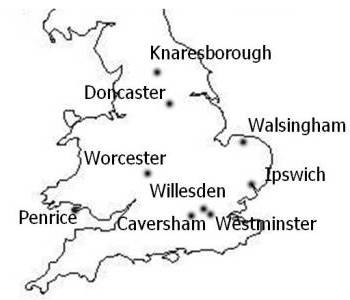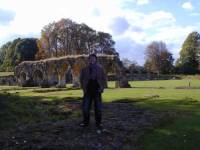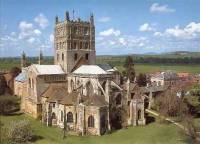Stephen Bates - The Dissolution
The Destruction of the Shrines
In 1535, Henry VIII commissioned the Valor Ecclesiaticus, a financial survey which effectively commenced the dismantling of the medieval cult of the saints. Cromwell's commissioners removed 'superstitious' relics from the houses they visited, such as Our Lady's girdle, employed by women for protection during childbirth, and the Virgin's milk. Shrines were demolished under the two Acts of Dissolution (1536 and 1539) and the Royal Injunctions of 1538, which instructed the clergy to take down images 'abused' by superstitious rites and to preach against pilgrimages. In March, Henry had been paying for a candle before Our Lady of Walsingham; that summer, the famous statue was itself burned in a public 'execution' of the saints along with those of Penrice, Caversham and Ipswich.
Major Marian shrines at the Dissolution

|
'Allso this yere, in the moneth of July, the images of Our Lady of Wallsingham and Ipswich were brought up to London, with all the jewelles that honge about them, at the kinges commaundement, and divers other images, both in England and Wales, that were used for common pilgrimages, because the people should use noe more idolatrye unto them, and they were burnt at Chelsy by my Lord Privie Seale.' |
| - Charles Wriothesley's Chronicle |
Tewkesbury Abbey, consecrated to the Blessed Virgin in 1121, was valued at £453 at the Dissolution. However, intervention by the local community spared its destruction: they bought it from the Crown to maintain its use as a parish church. Cromwell’s agents nevertheless demolished the Lady Chapel and the cloister. These parts of the abbey building represented a misguided belief in the intercession of saints and the merits of monastic prayer to expedite the soul’s progress through Purgatory and, consequently, there was no room for them under Henry VIII’s religious settlement. The community could have its parish church, but stripped of its superstitious, papist trappings.

Walsingham Abbey ruins

In the remains of Hailes, standing in the presbytery

Tewkesbury Abbey, showing the space where the Lady Chapel once stood
